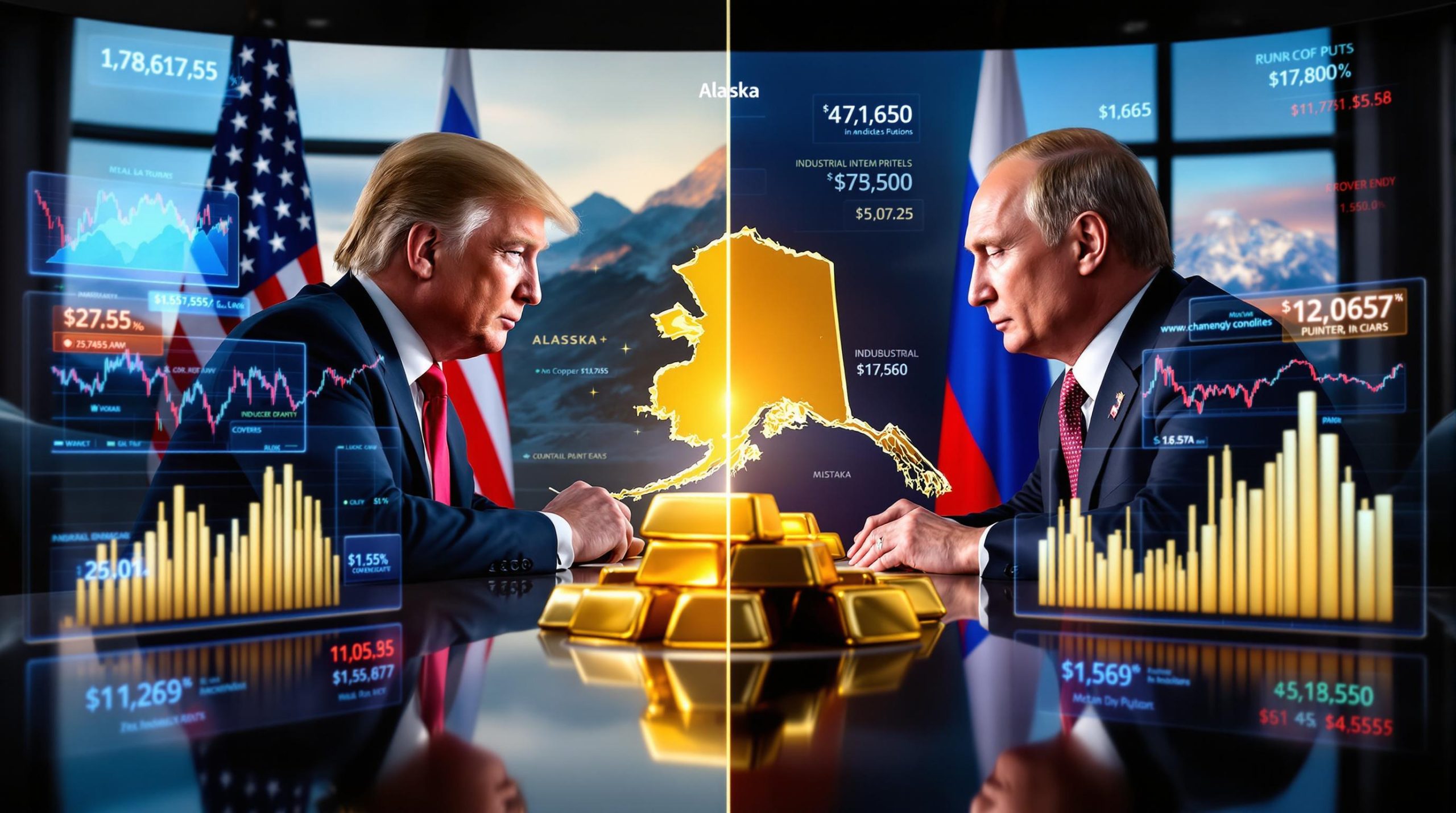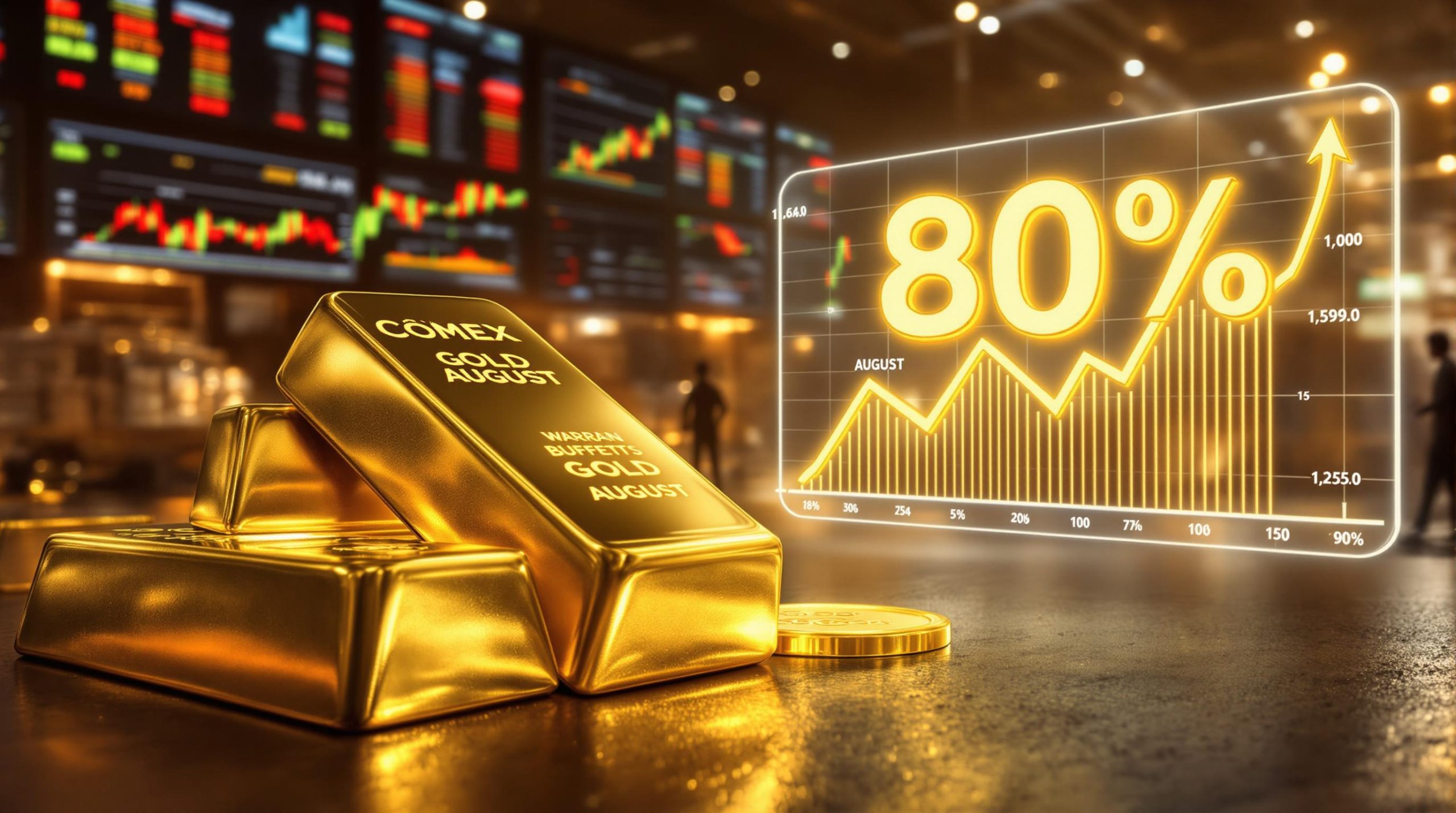The Strategic Transformation of Critical Minerals in Global Politics
In today's interconnected world, critical minerals have undergone a remarkable transformation from being mere industrial inputs to becoming powerful geopolitical assets. Nations worldwide recognize that these resources now represent a new form of leverage in international relations, reshaping everything from defense strategies to economic policies. This fundamental shift has placed the rise of critical minerals as the currency of geopolitical power at the heart of modern geopolitical competition.
The Evolution from Industrial Components to Strategic Assets
Critical minerals have traveled a long journey from their traditional role as specialized industrial materials to becoming central components of national security frameworks. This evolution reflects their growing importance in technologies that underpin both military capabilities and economic competitiveness.
"Critical minerals are no longer a niche industrial concern — they're the currency of geopolitical power, shaping supply chains from chips to clean energy," notes Tracy Hughes, Executive Director of the Critical Minerals Institute. This transformation has been particularly accelerated in recent years as nations recognize the strategic vulnerability created by critical minerals energy transition.
Driving Forces Behind the Strategic Elevation
Several key factors have propelled critical minerals to the forefront of geopolitical considerations:
- Clean energy transition demands creating unprecedented mineral requirements for battery storage, renewable generation, and grid modernization
- Digital transformation and AI advancement requiring specialized materials for computing infrastructure and data centers
- Manufacturing reshoring initiatives placing new pressures on securing reliable material supply chains
- Defense technology modernization increasing dependence on specialized materials for advanced systems
The convergence of these drivers has fundamentally altered how nations view these resources, transforming them from market commodities into strategic assets worthy of government intervention and protection.
The Foundation of Modern Technological Systems
Critical minerals form the backbone of virtually all advanced technologies that define modern economies. Their unique properties enable the functionality of everything from smartphones to electric vehicles, creating dependencies that extend throughout economic systems.
Applications Driving Critical Mineral Demand
The technological applications driving demand for these specialized materials span multiple industries:
- Semiconductor manufacturing requiring ultra-pure materials like germanium, gallium, and silicon
- Battery production utilizing lithium, cobalt, nickel, and graphite for energy storage
- Advanced magnets incorporating rare earth elements for motors, generators, and sensors
- Nuclear technologies using specialized materials for energy generation and medical applications
- Defense systems depending on high-performance materials for weapons, communications, and surveillance
Each application creates specific material requirements that cannot easily be substituted, cementing the strategic importance of securing reliable supply chains.
Economic Implications of Supply Concentration
The concentrated nature of critical mineral supply chains creates significant economic vulnerabilities:
- Price volatility affects downstream industries, complicating long-term investment planning
- Manufacturing bottlenecks emerge when material shortages occur, rippling through supply chains
- Investment flows increasingly respond to supply security concerns rather than traditional market factors
- National competitiveness becomes directly linked to reliable mineral access
These economic realities have transformed critical minerals from purely market-driven commodities into strategic resources that merit government attention and intervention.
The Global Leaders in Critical Minerals
The landscape of critical mineral control reveals clear leaders and emerging challengers. While mining capacity remains important, processing infrastructure has emerged as the true determinant of influence in this strategic domain.
China's Dominant Position
China has established an unparalleled position in critical mineral supply chains through decades of strategic investment:
- Processing dominance across multiple critical mineral categories, particularly rare earth elements
- Strategic export licensing used as a geopolitical tool to influence international relations
- Aggressive resource acquisition both domestically and internationally to secure raw materials
- Vertically integrated supply chains from mining through manufacturing for strategic industries
Recent reports indicate China has further tightened scrutiny on foreign firms stockpiling rare earths, reasserting export license control mechanisms according to the Financial Times (August 2025). This approach demonstrates how processing dominance can be leveraged for geopolitical influence.
The U.S. Strategic Response
The United States has recognized its vulnerabilities in critical mineral supply chains and implemented various initiatives to address them:
- The U.S. Department of Energy announced funding totaling close to US $1 billion for critical minerals and materials supply chain development (U.S. Department of Energy, energy.gov, August 2025)
- Public-private partnerships in semiconductor manufacturing, including discussions between the Trump administration and Intel Corporation regarding a potential government ownership stake (Bloomberg News via Reuters, August 14, 2025)
- Nuclear energy initiatives supporting data center growth, with companies like Equinix securing over 1 GW of nuclear power through multiple agreements (Reuters, August 14, 2025)
- Integration of industrial policy with national security considerations to address strategic vulnerabilities
These efforts reflect a growing recognition that critical mineral security requires coordinated government action rather than relying solely on market forces.
Emerging Players in the Critical Minerals Landscape
Several other nations are developing significant roles in critical mineral markets:
- India is establishing a national minerals exchange modeled after London and Shanghai for transparent, electronic price discovery (InvestorNews analysis, August 2025)
- Japan and South Korea are forming partnerships with India's IREL in rare earth magnet production, exchanging technology for material access (Reuters, August 14, 2025)
- Central Asian states with significant mineral resources are becoming focal points for mineral diplomacy, though the U.S. appears to be losing ground in engaging these nations due to inconsistent policy (Eurasianet, August 2025)
- Myanmar has seen a surge of unregulated rare earth mining in rebel-held Shan State, feeding supply chains into China according to satellite imagery (Al Jazeera, August 7, 2025)
These developments highlight how the rise of critical minerals as the currency of geopolitical power is reshaping international relationships and creating new geopolitical dynamics across regions.
Government Intervention in Critical Mineral Markets
Government intervention in critical mineral markets has intensified significantly, with industrial policy becoming a primary driver of investment and development across multiple nations.
Direct Government Investment Approaches
Governments are increasingly taking direct ownership positions to secure critical mineral supply chains:
- The Trump administration is in discussions with Intel Corporation for the U.S. government to take an ownership stake in the chipmaker, which caused Intel shares to jump 7-8% following these reports (Bloomberg News via Reuters, August 14, 2025)
- Public funding for advanced nuclear reactor development through the Nuclear Reactor Pilot Program, which selected 11 advanced reactor firms including Oklo Inc., Radiant Nuclear, and Last Energy (Reuters, August 13, 2025)
- Strategic technology transfer agreements to develop processing capabilities in allied nations
- National stockpiling initiatives to provide buffer against supply disruptions in critical materials
These direct interventions represent a significant departure from traditional market-based approaches to resource development.
Policy Frameworks Supporting Critical Mineral Security
Beyond direct investments, governments are implementing comprehensive policy frameworks:
- The Department of Energy's nearly $1 billion funding package covers mining, processing and manufacturing technologies across the critical minerals spectrum (U.S. Department of Energy, energy.gov, August 2025)
- Tax incentives and credits for domestic production and processing of strategic materials
- Regulatory streamlining for projects deemed essential to national security
- International cooperation agreements focused on diversifying supply sources among allied nations
These policy tools are reshaping market incentives and investment flows throughout critical mineral supply chains.
Market Infrastructure Development
Governments are also working to develop market infrastructure that supports transparent and resilient supply chains:
- India's proposed national minerals exchange aims to create transparent, electronic price discovery mechanisms across minerals and metals markets (InvestorNews analysis, August 2025)
- Public-private partnerships to develop processing facilities in strategic locations
- Supply chain mapping initiatives to identify vulnerabilities and critical dependencies
- Standards development for responsible sourcing to address environmental and social concerns
These infrastructure investments complement direct funding and policy initiatives to create more robust critical mineral ecosystems.
Strategic Critical Mineral Projects
Across the global landscape, certain critical mineral projects are receiving unprecedented attention and investment due to their strategic importance for supply chain security.
Mining and Extraction Initiatives
Key mining projects are being fast-tracked to address supply vulnerabilities:
- Rare earth mining expansion in regulated jurisdictions to reduce dependence on unregulated sources like Myanmar's Shan State
- Lithium production scaling in North America and Australia to support battery supply chains
- Graphite development projects advancing in response to battery material demands
- Copper & uranium investments accelerating to support electrification infrastructure requirements
These projects face significant challenges in meeting environmental standards while achieving competitive production costs compared to less regulated operations.
Processing and Refining Developments
Processing capacity has emerged as the critical chokepoint in many mineral supply chains:
- Rare earth separation facilities outside China receiving priority funding and support
- Battery material processing hubs being established in North America and Europe
- Semiconductor-grade material production facilities under development in allied nations
- Recycling infrastructure expansion to create "urban mining" capabilities for critical materials
These midstream facilities represent the most challenging aspect of supply chain diversification due to technical complexity and capital requirements.
Advanced Manufacturing Integration
The ultimate goal of critical mineral strategies involves integrating secure material supplies with manufacturing capabilities:
- Magnet production facilities being established in strategic locations to reduce dependence on Chinese suppliers
- Battery gigafactories co-located with material sources to minimize supply chain vulnerabilities
- Semiconductor fabrication expansion in secure jurisdictions supported by government incentives
- Defense supply chain localization efforts prioritizing secure material sourcing
This integration of upstream resources with downstream manufacturing represents the most comprehensive approach to supply chain security.
The Energy Transition's Impact on Critical Mineral Demand
The global energy transition is creating unprecedented demand for critical minerals, with clean energy technologies requiring significantly more materials than conventional alternatives.
Nuclear Energy Renaissance
Nuclear energy is experiencing renewed interest as a source of reliable, carbon-free power:
- The DOE selected 11 advanced reactor firms for a Nuclear Reactor Pilot Program with the goal of bringing at least three modular reactors to criticality by mid-2026 (Reuters, August 13, 2025)
- Equinix has secured over 1 GW of nuclear power through agreements including 500 MW from Oklo's next-generation reactors, preorders for 20 Radiant microreactors, and future PPAs with ULC-Energy and Stellaria in Europe (Reuters, August 14, 2025)
- Small modular reactors are gaining traction for industrial applications, particularly in data centers and manufacturing facilities
- Advanced nuclear technologies require specialized materials including zirconium alloys, hafnium, and various rare earth elements
This nuclear renaissance creates additional demand for several critical minerals while potentially alleviating energy constraints for material processing facilities.
Battery Materials Supply Chain Pressure
The rapid growth of electric vehicles and stationary storage is creating intense pressure on battery material supply chains:
- Lithium demand growth continues to outpace production capacity, despite significant investment
- Graphite supply security has become a strategic priority for battery manufacturers
- Cobalt alternatives are being developed to reduce dependency on politically challenging sources
- Recycling technologies are scaling up to create a circular economy for battery materials
These supply chain pressures have led to significant price volatility and strategic positioning by both companies and nations.
Renewable Energy Material Requirements
Renewable energy technologies create their own substantial material demands:
- Rare earth magnets for wind turbines, particularly offshore installations
- Silver, silicon, and various semiconductor materials for solar panel production
- Copper for transmission infrastructure expansion and interconnection
- Grid-scale storage systems creating additional mineral demands beyond the battery sector
The combination of these renewable technology requirements with electrification and battery demands creates unprecedented pressure on critical mineral supply chains.
Investment Implications of Critical Mineral Geopolitics
The geopolitical dimensions of critical minerals are creating distinct investment patterns, with government priorities increasingly influencing market valuations.
Market Valuation Dynamics
Government initiatives and strategic positioning are significantly impacting company valuations:
- Intel shares jumped 7-8% following reports of potential U.S. government stake discussions (Bloomberg News via Reuters, August 14, 2025)
- Nuclear energy partnerships are driving corporate valuations, particularly for advanced reactor developers
- Supply chain positioning has become a key factor in investment attractiveness across technology sectors
- Government funding announcements create market movements that frequently overshadow traditional financial metrics
These dynamics require investors to develop new analytical frameworks that incorporate geopolitical factors alongside traditional financial metrics.
Strategic Investment Considerations
Investors in the critical minerals space must consider several strategic factors:
- Supply chain positioning – Upstream (mining), midstream (processing), or downstream (manufacturing) each present different risk-reward profiles
- Geographic diversification – Projects in politically stable jurisdictions may command premium valuations despite higher costs
- Technology differentiation – Innovations that reduce material intensity or enable substitution can provide competitive advantages
- Alignment with government priorities – Projects that address specific national security concerns may receive preferential treatment
Companies that successfully navigate these considerations can potentially capture significant value in the evolving critical minerals landscape.
Risk Assessment Framework
Effective investment in critical minerals requires a comprehensive risk assessment framework:
- Supply chain vulnerability analysis – Identifying potential disruption points and concentration risks
- Regulatory and policy exposure – Evaluating how changing government priorities might impact projects
- Geopolitical risk factors – Assessing how international tensions could affect specific material flows
- Execution timeline realism – Recognizing the frequent delays in bringing new capacity online
These risk factors must be balanced against the significant growth potential in critical mineral markets driven by energy transition and technological advancement.
Challenges in Building Resilient Critical Mineral Supply Chains
Despite accelerated efforts, significant challenges remain in establishing truly resilient critical mineral supply chains.
Technical and Economic Barriers
Several technical and economic factors complicate supply chain diversification:
- Processing expertise remains concentrated in a few locations, particularly for rare earths and certain semiconductor materials
- Capital intensity of new facilities creates high barriers to entry for new market participants
- Environmental permitting complexities can significantly delay project development timelines
- Skilled workforce limitations constrain the speed of capacity expansion in new locations
These barriers mean that even well-funded initiatives may require years to achieve meaningful supply diversification.
Policy Implementation Gaps
Government policies face several implementation challenges:
- Execution delays in translating funding announcements into operational facilities
- Inconsistent engagement with resource-rich regions, as evidenced by the U.S. approach to Central Asia (Eurasianet, August 2025)
- Coordination difficulties between different government agencies and departments
- Regulatory frameworks that lag behind strategic goals, creating implementation bottlenecks
These policy gaps can significantly reduce the effectiveness of even well-designed critical mineral strategies.
International Cooperation Hurdles
Efforts to build international partnerships face numerous obstacles:
- Tension between competition and collaboration among allied nations
- Technology transfer restrictions limiting knowledge sharing
- Minerals tariff landscape conflicts undermining supply chain integration
- Differing standards and regulations complicating cross-border projects
These cooperation challenges highlight the difficulty of translating shared concerns into effective joint action.
The Future Evolution of Critical Mineral Markets
The critical minerals landscape will likely continue its transformation as supply chains restructure and new technologies emerge.
Supply Chain Regionalization
Global supply chains are increasingly reorganizing along geopolitical lines:
- "Friend-shoring" replacing purely cost-driven globalized supply models
- Regional processing hubs developing around secure mining assets in allied nations
- Vertical integration strategies gaining prominence across technology sectors
- Transparency and traceability becoming competitive advantages in material sourcing
This regionalization will likely continue to reshape trade flows and investment patterns for critical minerals.
Technological Disruption Potential
Several technological developments could significantly impact critical mineral markets:
- Material substitution innovations reducing dependence on the most constrained resources
- Recycling technologies improving recovery rates from end-of-life products
- Advanced extraction methods potentially unlocking new resource opportunities
- Design innovations reducing material intensity while maintaining performance
These technological factors introduce significant uncertainty into long-term demand forecasts for specific materials.
Market Structure Evolution
Critical mineral markets are developing new structures to address current limitations:
- New pricing mechanisms and exchanges, like India's proposed national minerals exchange
- Strategic reserves increasingly influencing market dynamics across multiple materials
- Long-term contracting replacing spot market reliance for supply security
- Environmental, social, and governance (ESG) considerations becoming central to investment decisions
These structural changes will likely create both challenges and opportunities for market participants as they navigate the evolving landscape.
Critical Minerals and Geopolitical Power: Key Questions Answered
What defines a mineral as "critical"?
Critical minerals are defined by three primary characteristics:
- Essential applications in technologies vital to economic and national security
- Supply risks stemming from geological scarcity, geopolitical factors, or market concentration
- Limited substitution options due to their unique physical or chemical properties
Different countries maintain varying lists of critical minerals based on their specific economic structures and security concerns, though there is significant overlap in most national designations.
Which critical minerals face the most severe supply constraints?
Several categories of critical minerals face particularly challenging supply situations:
- Heavy rare earth elements (dysprosium, terbium) used in permanent magnets face severe processing concentration in China
- Battery materials including cobalt (political risk), graphite (processing concentration), and lithium (production scaling challenges)
- Semiconductor materials such as gallium, germanium, and high-purity silicon face both geological and processing constraints
- Platinum group metals essential for catalysts and various high-technology applications face concentrated production
Each of these materials presents unique challenges requiring tailored approaches to supply security.
How are private companies responding to critical mineral challenges?
Private sector responses to critical mineral challenges include:
Want to Profit from Major Mineral Discoveries?
Stay ahead of the market with Discovery Alert's proprietary Discovery IQ model, which provides instant notifications when significant mineral discoveries are announced on the ASX. Explore our dedicated discoveries page to understand how historic mineral discoveries have generated exceptional returns for early investors.




